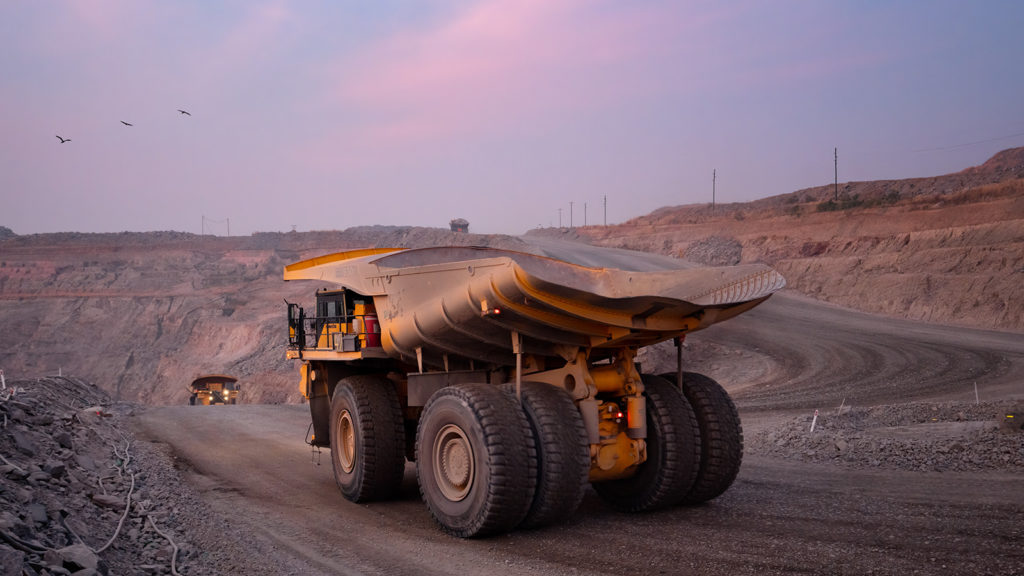The feasibility study for the expansion of Barrick’s Lumwana mine in Zambia is expected to be completed by the end of the year, paving the way for construction to start in 2025, the company said today.
Speaking during a webinar focused on updating the market on the Lumwana Super Pit Expansion Project, Barrick President and Chief Executive Mark Bristow said the expansion unlocks the potential to transform the Lumwana mine into a long-life, high yielding, Top 25 copper producer and a Tier 1 copper mine, capable of contending with the volatility of the copper demand cycles.
The expansion involves first doubling throughput by twinning the existing process circuit and then by significantly increasing mining volumes. Plant throughput will grow from the current 27 Mt to 52 Mt, doubling the mine’s annual copper production from 120,000 t to a life-of-mine average of 240,000 t per annum. The process expansion is supported by a ramp up of total mining volumes, which are planned to increase incrementally year-on-year, from 150 Mt in 2024 to approximately 240 Mt in 2028 and then to an average rate of 290 Mt per annum from 2030 onwards.
Chief Operating Officer for Africa and Middle East Sebastiaan Bock said: “The phased ramp-up will enable a competitive cost profile over the life of the mine and annual operating cash flow and free cash flow are projected to improve by as much as 85% and 60%, respectively, based on the long-term copper price consensus. These production and cost improvements will contribute to an estimated incremental net present value (NPV8) of $1.7 billion.”
At a flat long term average copper price consensus of $4.13/lb, Barrick estimates that the project will deliver an incremental IRR (Internal Rate of Return) of 20% and a total mine IRR of more than 50%, paying back the initial expansion capital in approximately two years after completion of the expansion. Post-expansion, cost of sales and C1 cash costs are estimated at approximately $2.36/lb and $1.85/lb, respectively, placing Lumwana in the first quartile of the industry, excluding the benefit of any byproducts.
Barrick says the plant expansion design is modern, efficient and fit for purpose – building on the existing operational knowledge base with a design underpinned by geometallurgical test work and its advanced orebody knowledge. Thorough comminution and flotation testwork has been completed on the mined Lumwana deposits and new satellites.
It also has expanded footprint synergises with the existing process plant infrastructure, plus learnings from the feasibility study have been applied to upgrades on the existing process plant to increase use of technology to improve efficiency and delivery. The expansion will see improvements in process control and automation alongside the experience of world-class operators from the current plant.
According to Mineral Resource Management and Evaluation Executive Simon Bottoms, the process plant engineering has matured to a point that has allowed Barrick to select major equipment vendors and place orders for long lead equipment, including both mills and crushers. “We are starting detailed engineering works this quarter and expanding our onsite accommodation while building partnerships with key suppliers and contractors ahead of the pre-construction ground preparation works, which are scheduled to start next year,” said Bottoms.
Commissioning of the new process plant is planned to start in the second half of 2027. Once the new process circuit is commissioned, the existing circuit will undergo a series of planned shutdowns, allowing Barrick to install upgrades, while ensuring uninterrupted copper delivery throughout the expansion.
The permitting process for the expansion is well underway, with the Environmental and Social Impact Assessment already submitted to the Zambian authorities and approval expected by the end of this year.
Regarding the mining equipment, new Komatsu 930E-5 trucks along with Hitachi EH5000 trucks now make up the fleet teamed with Komatsu PC8000 and PC7000 shovels, with Barrick stating that it has optimised the fleet for the ramp-up based on past experience. A phased transition to cable electric-powered shovels is set to be complete in 2031; while in-pit crushing and conveying has been built into the mine design to reduce truck requirements.











